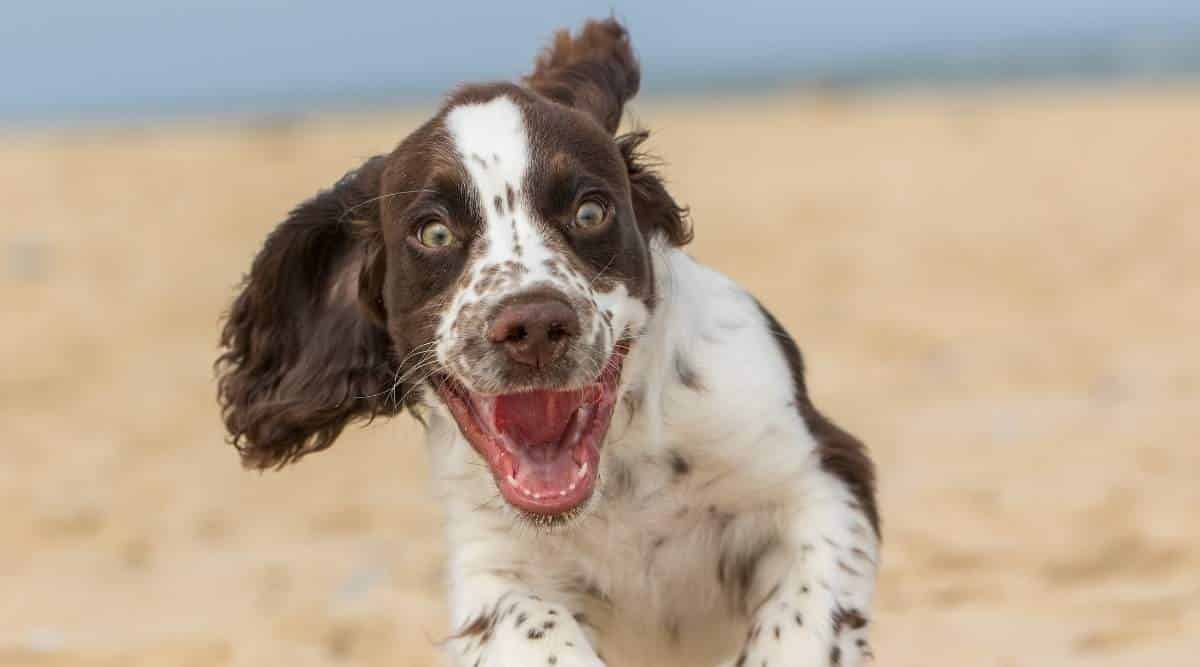Flat-Coated Retriever Information: Breed Facts, Traits, And More
When you purchase through links on our site, we may earn a commission. Here’s how it works.
Most everyone knows a Golden Retriever, and perhaps you’ve heard someone refer to a “black” Golden Retriever and found yourself intrigued. These folks likely met a Flat-Coated Retriever (FCR). The Flat-Coated Retriever was a predecessor of the Golden and resembles it at a cursory glance, but the Flat-Coat has distinct differences both in appearance and in temperament. Created as a breed in the 1880s, the Flat-Coated Retriever has a well-earned reputation as the happiest dog in town.
Originally known as the Wavy-Coated Retriever, dogs shown in this class in the 1800s were of various coat colors. Eventually, enthusiasts differentiated the breeds, and the Flat-Coat became restricted to black or liver only.
Happy-go-lucky and playful, Flat-Coats have captured the elusive fountain of youth. They are joyful, love to play, and retain an eternal puppy-like exuberance into adulthood. FCRs are excellent family dogs, and their ideal people would spend plenty of time with them. With lots of energy and the desire to expend it, they are ideally suited to an active outdoor human family with a stable routine.
Table of Contents
Breed History
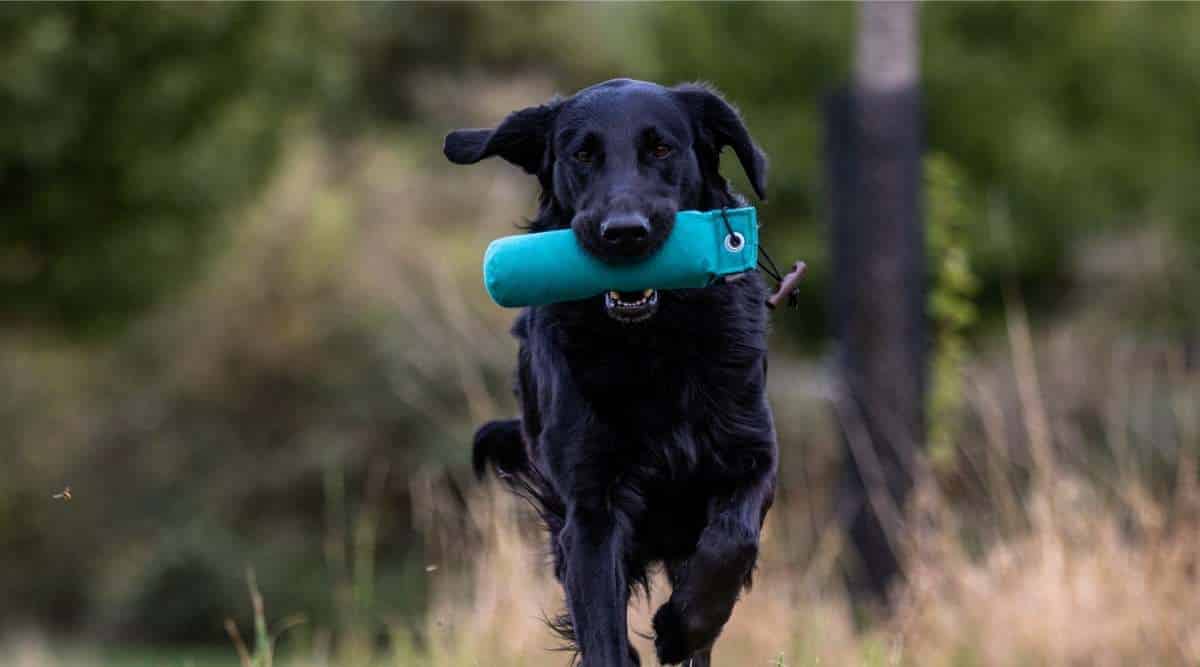
In the 1800s, British sportspeople were breeding dogs to retrieve game and waterfowl. The function of the animal was the most important trait, so spaniels, setters, The original Curly-Coated Retrievers then diverged into two categories, Curly and Wavy-Coated Retrievers. The dogs were bred to both work and show, and the two lines competed against each other on the show bench.
S.E. Shirley, founder and President of the British Kennel Club, began to refine the Wavy Coat strain with black retrievers from his father’s kennel to create a dual-purpose show and working breed. He bred out the coarseness of the Newfoundland-type head and flattened the coat, likely by adding collie to the mix. Called both the Flat-Coat and the Wavy-Coat interchangeably, the new breed became the dog of choice for decades for wealthy sportspeople.
The rising popularity of Labradors and Goldens was one factor in the decline of the Flat-Coat’s popularity. Still, World War II was a more significant factor in the decline of its numbers. The sheer hardships of the war on the British people and economy took a toll, as did canine disease during the time. Most of the current Flat-Coat lines trace back to dogs kept by a few determined breeders who preserved the breed for future generations.
Temperament
The Flat-Coated Retriever’s nickname, “The Peter Pan” of dogs, encapsulates the happy-go-lucky attitude of the breed. They truly reflect the idea that you’re only as old as you feel, and they remain young at heart all their days. Trainers who expect to drill for instant results will frustrate the Flat-Coat and themselves. Typically, when we talk about a breed maturing slowly, it’s physical growth. In the Flat-Coat, their mind matures slowly and, in some ways, may not mature at all. He retains an air of puppyhood until his final breath, which can enchant or frustrate, depending on expectation.
Flat-Coats never meet a stranger and don’t make great guard dogs for that reason. His natural retrieving instincts are strong, but he needs to be bonded to you to hunt reliably with you. The same agile and independent mind that makes him an excellent hunter means he needs to want to work for you in particular, not just retrieve in general. The instinct to retrieve isn’t enough. How well he works in the field depends on his relationship with his handler. If he shares your home and you put time and attention into him, he’s loyal and devoted regardless of the task.
Size And Appearance
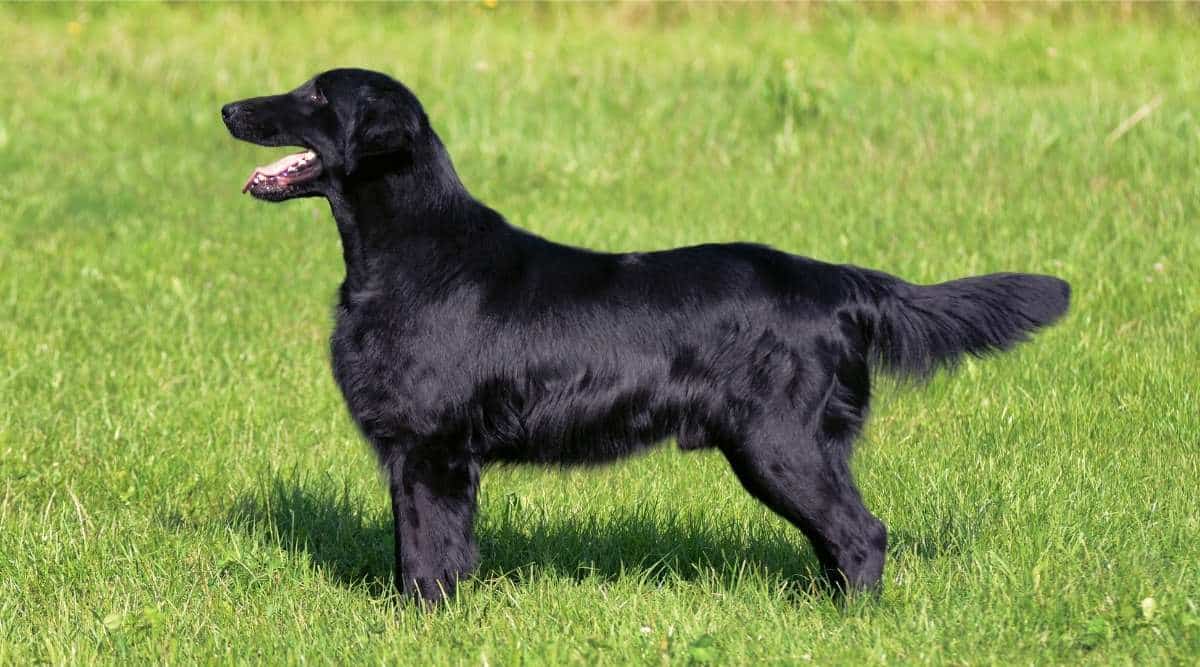
They are medium-sized dogs (purposely so for ease of transport) and described as showing “power without lumber and raciness without weediness.” He is still a robust and well-balanced dog but lighter and more refined than the heavier retrievers. His head, in particular, reflects this refinement. The Flat-Coat’s head is narrower and longer than a Golden’s, with a less pronounced stop, the dip where his muzzle meets his skull just below his eyes.
As his name suggests, the Flat-Coat’s thick black or liver coat lies flat, but his legs and expressive tail are feathered. The breed standard requires a height of 23 to 24½ inches at the shoulder for males and 22 to 23½ inches for females. He should be lean and free from excess weight.
Coats And Colors
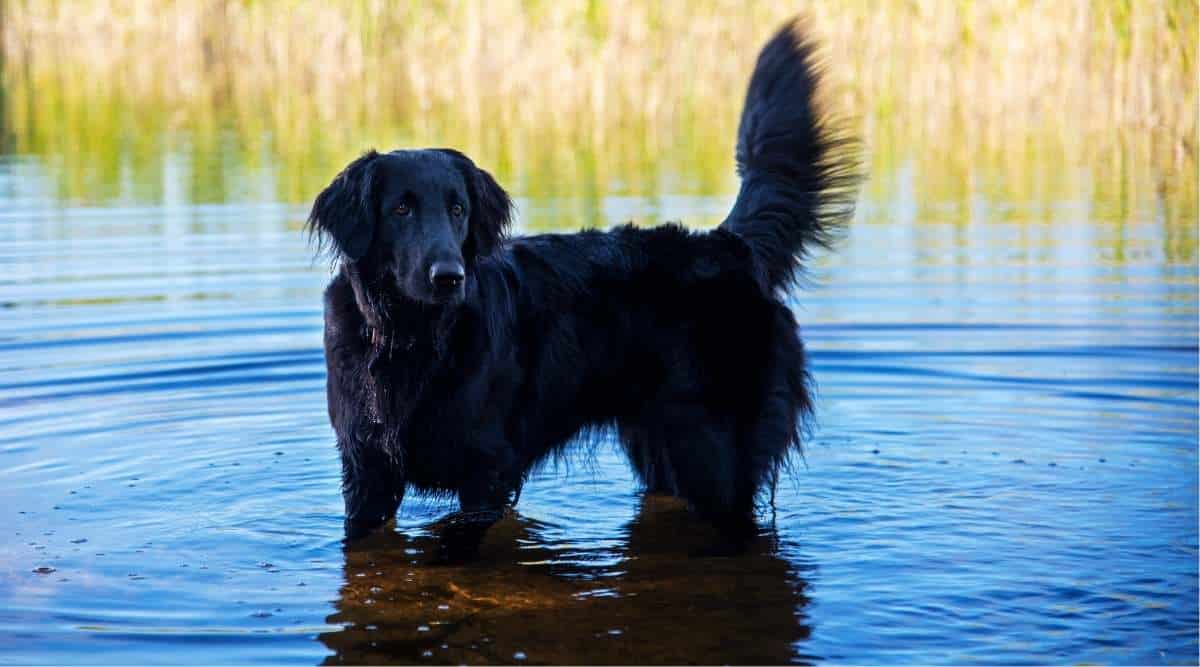
Thick and with an undercoat to protect him in water and during harsh weather, the FCR’s coat should never be curly. The Flat-Coat’s legs and tail are stylishly feathered like the Golden Retriever.
Flat-Coats were the breed from which Goldens were derived. Originally, anything other than black or liver pups were considered not to breed standard. Coat color is an expression of the dog’s genetics, and Flat-Coated Retrievers have the dominant E allele, which produces the black or liver coat color. The recessive e allele makes a yellow or red coat in color. This recessive e allele is why the Golden Retriever is golden, and the dominant E allele is why the Flat-Coated Retriever is black or liver.
Exercise Requirements
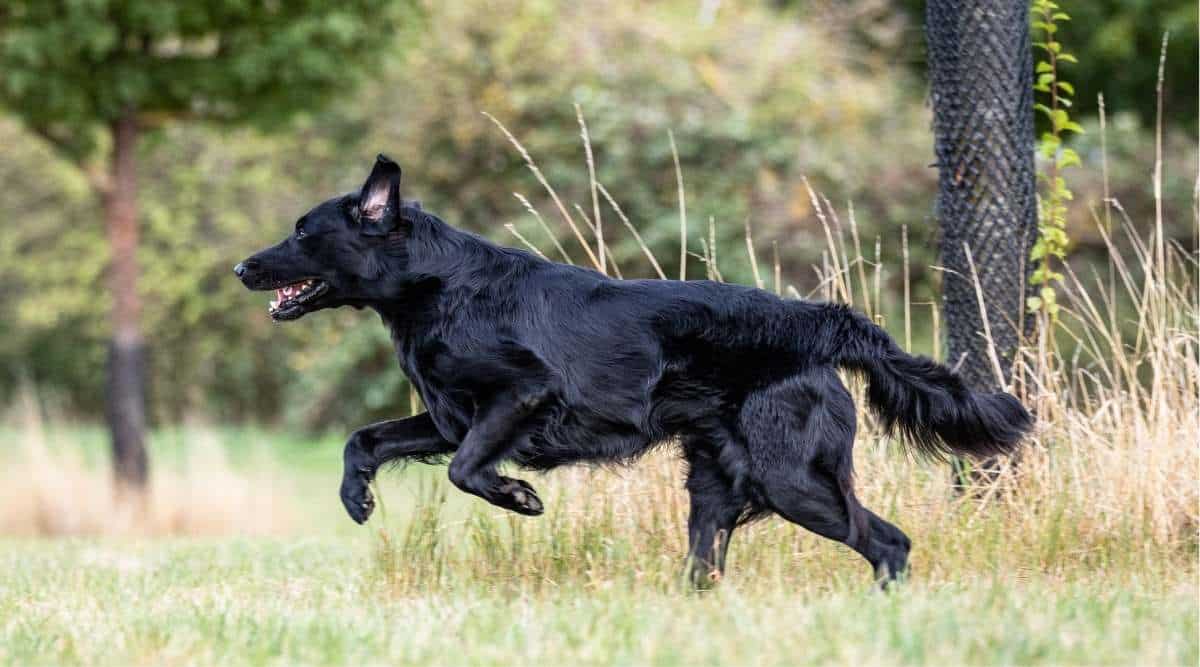
Ideally, they’ll be healthiest with two hour-long walks per day. Their genetics mean they enjoy swimming and fetching like most retrievers. Take your dog to your local beach or lake to run and swim if your circumstances allow it. Activities like trail running or hunting with your Flat-Coat keep you both active and fulfilled.
Living Conditions
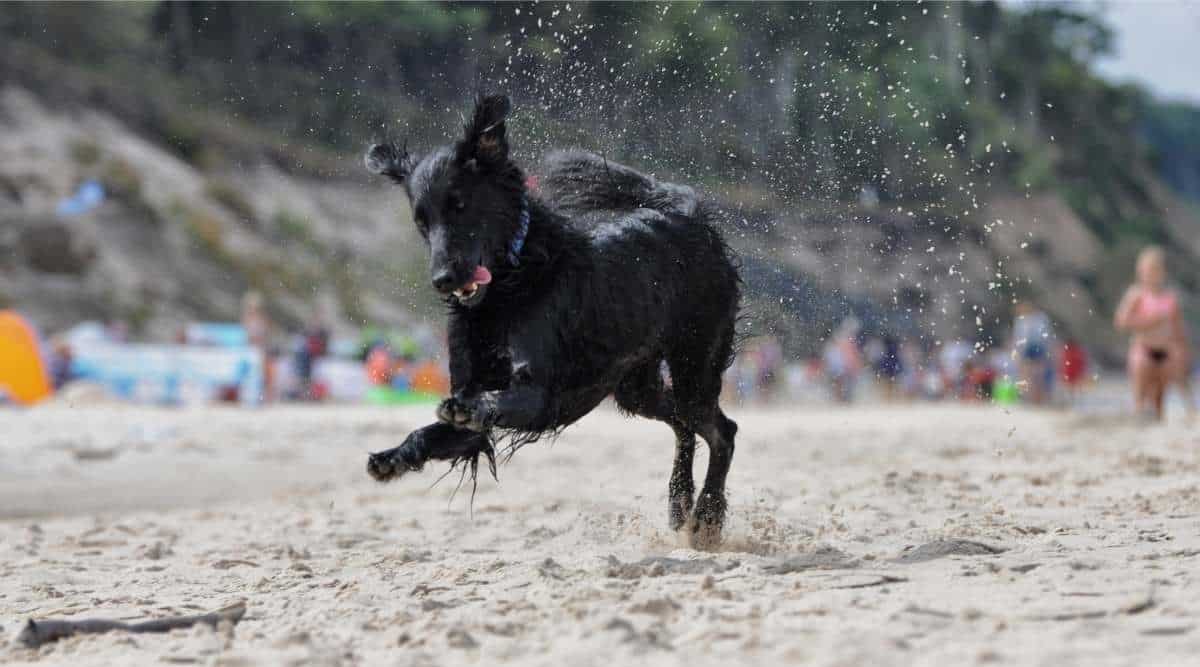
While some Flat-Coats may adjust to life in the backyard, seeing their favorite people only on the weekend, most will not. He’s a devoted family member and tends to stick close to your side. A large fenced yard is a must for this energetic pup but may not be enough to fulfill his physical and mental engagement needs. They are not apartment dogs.
Training
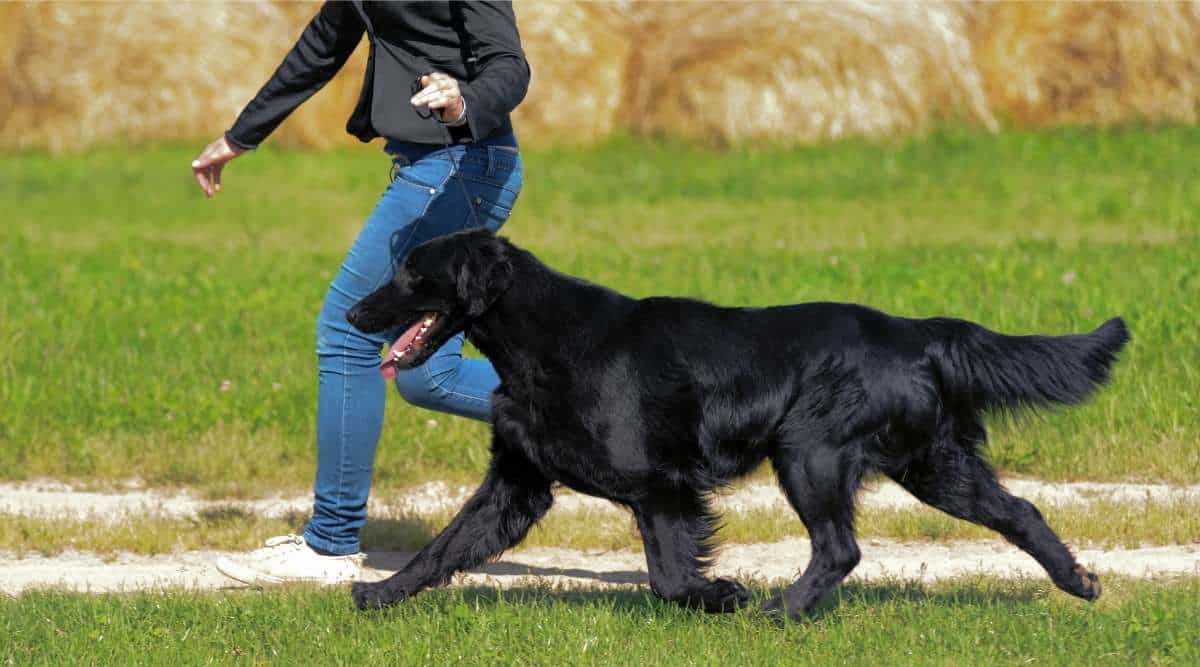
Flat-Coats are very trainable and eager to please but require more patience than a typical retriever. They are naturally intelligent dogs who pick up new commands quickly, but they require gentle training. They are sensitive to harsh corrections and need a quiet and fair handler. Like most dogs bred to work alongside humans, the Flat-Coat wants to be with his family. He’ll fill the time with undesirable behaviors if left alone for long periods.
First and foremost, Flat-Coated Retrievers were bred to be hunting dogs. After basic obedience training, work with your Flat-Coated Retriever to retrieve a decoy, and then train your dog to seek the trail by scent. Use a spray scent to teach him how to follow the scent trail. The transition to working in the field will be the actual test of his readiness. The two of you will be ready to flush and retrieve downed birds before returning at day’s end to the comforts of home and hearth.
Flat-Coated Retrievers aren’t kennel to field dogs. They are household companions, too. They are quick studies but respond better to loving praise than to strict repetition and, like a teenager, may rebel if pushed too forcefully. If you want your Flat-Coat to be able to handle time away from you during the day, you must spend quality time with him as a house dog, not just a field dog.
Health
Joint Dysplasia
Flat-Coated Retrievers risk developing hip and elbow dysplasia like many other medium and large dog breeds. Choosing either an adult or pup from parents tested by the Orthopedic Foundation for Animals (OFA-tested) helps mitigate the risk. Still, dysplasia also occurs from rapid growth as a puppy. Nutrition designed for large breed puppies is a must. Joint dysplasia in the hips and elbows typically presents as lethargy, general stiffness, and signs of pain.
Patellar Luxation
Just like in people, the patella is the knee cap. The patella sits in a groove at the top of the shin. A luxating patella slips in and out of this groove, dislocating and stopping the knee from bending properly. Not only does this cause lameness, but it can also cause pain and arthritis.
Luxation of the patella is usually a genetic condition. Although it typically affects small breeds, patellar luxation can affect larger dogs. If you notice your dog holding a leg up for a few steps as he runs, but then he uses it normally again, take your dog to the vet to check it out. This condition can lead to stiffness and arthritis later in life. Treatment varies with the severity of the condition. Mild cases of patellar luxation may be treated with NSAIDs to alleviate discomfort. In severe cases, however, surgery will be the recommendation.
Cancer
The incidence of cancer in Flat-Coated Retrievers is high enough that the breed organization calls members to contribute to a genetics database. Flat-Coats are particularly susceptible to soft tissue sarcoma (especially histiocytic sarcoma). The prognosis for these cancers is poor and is one of the leading causes of death in younger Flat-Coats.
Nutrition
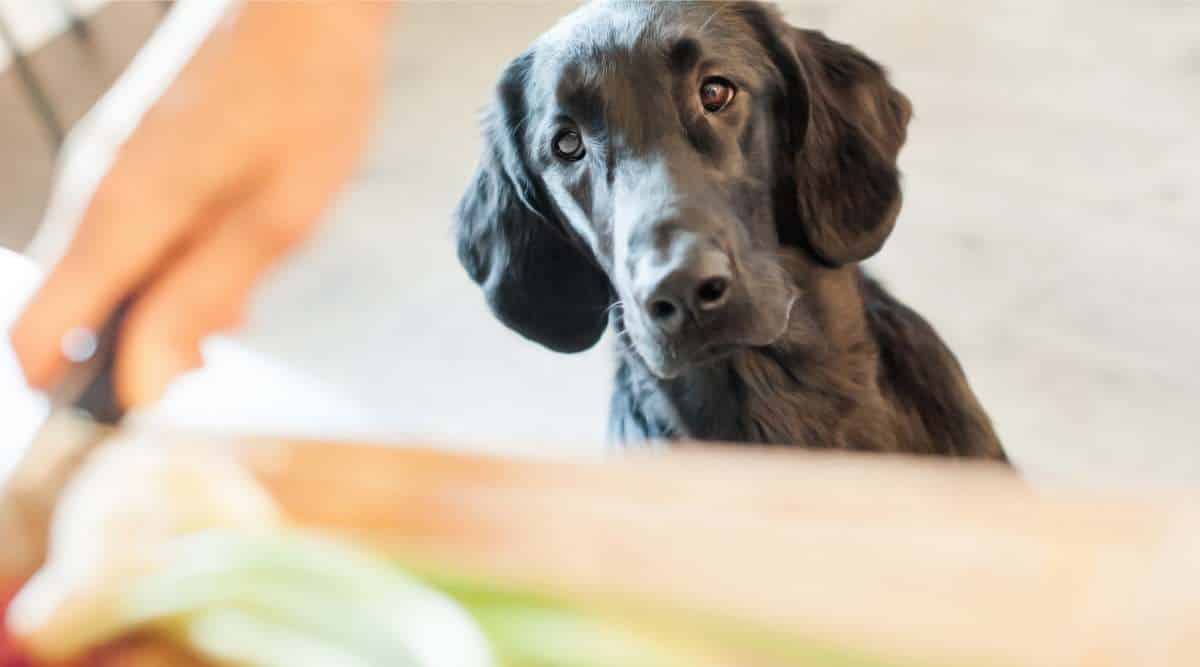
The average adult Flat-Coated Retriever will eat approximately three to four cups of food per day. Your dog’s body condition will be the best guide to follow. Feeding the best quality nutrition that you can afford may be more cost-effective in the long run than skimping with a bargain brand kibble.
Choose a high-quality formula that matches your pup’s age to keep this active breed healthy and reduce the health risks associated with dysplasia. A high-quality kibble including meat protein, fiber, healthy carbs, omega-3 fatty acids, vitamins, and minerals will meet your Flat-Coat’s nutritional needs. You’ll be less likely to have to add costly supplements.
Grooming
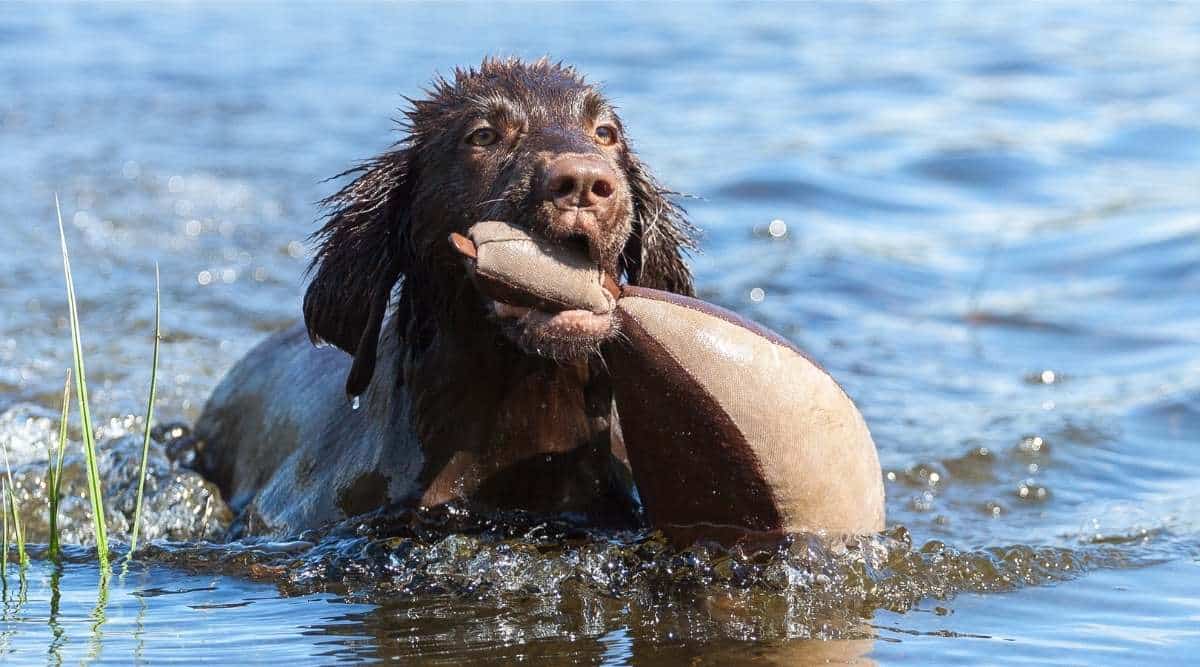
You’ll need to brush him almost daily to remove any dirt and debris he picks up outside. A slicker brush will help you remove dirt and mats from their coat, and you can follow up with a bristle brush to make their coat shine. Their ears and feet are the areas that are most likely to get matted, so check them thoroughly before they become knotted beyond repair.
Regular brushing stimulates blood circulation and distributes oils throughout his hair so that even his rough coat glows with health. When seasons change, Flat-Coated Retrievers will shed their undercoat and benefit from being brushed with an undercoat rake to remove this extra loose hair. The two main shedding seasons are spring and fall, and the spring shed, where the thick winter coat sheds out, will be the more pronounced.
Breeders And Puppy Costs
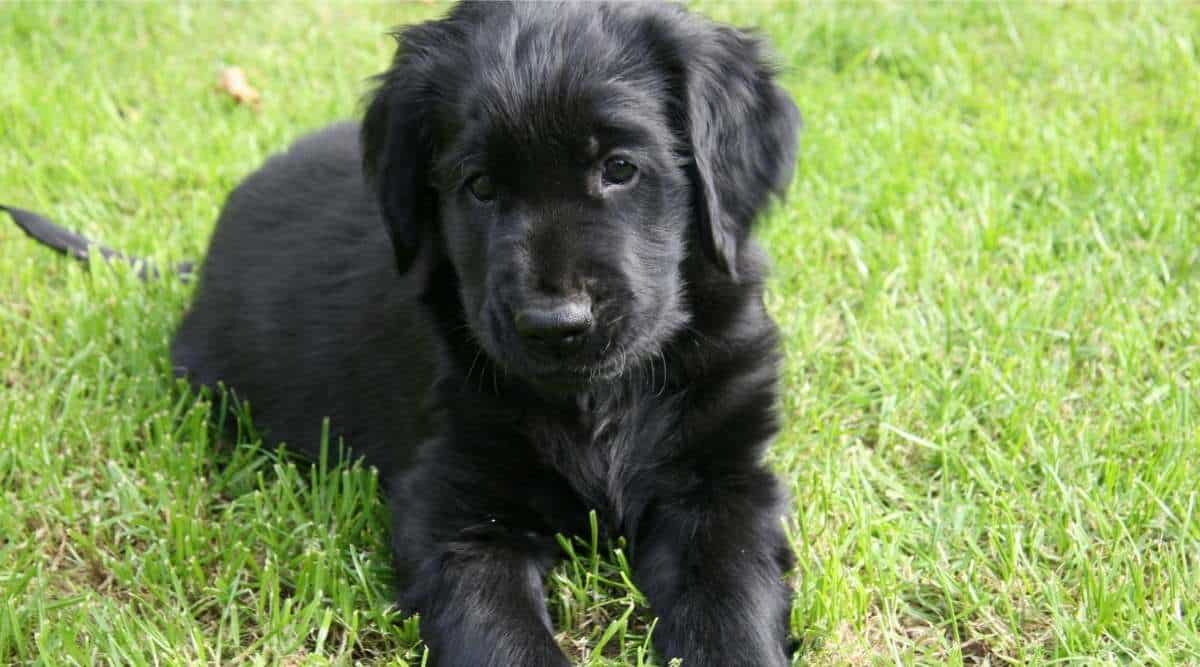
You may expect to pay from $1,500 to $4,000 for a Flat-Coated Retriever from a breeder. Show quality dogs will cost even more. Be sure the breeder you choose stands behind the health of their dogs.
Rescues And Shelters
Be sure to consider adopting a Flat-Coated Retriever. Although they are on the rare side, a lonely pup could be waiting for his forever home at a shelter near you. Adopting a dog is less expensive than buying from a breeder.
Flat-Coated Retrievers may be in rescue because their old families did not understand the breed’s temperament and expected him to mature like a Golden or Labrador. As your new best friend adjusts, give him lots of attention and playtime. Recognize that although he may be physically mature, the breed’s nature means he’s not supposed to act like it. Throw a ball for him and allow him to show off his retrieving skills and settle in.
As Family Pets
In general, this breed is:
- Intelligent and trainable.
- Youthful in spirit even into old age.
- Sensitive to harsh training.
- Family-friendly.
- Friendly with other dogs.
- Active and energetic.
- An excellent working retriever.
- Medium size and build.
- An all-around companion from field to hearth.
Final Thoughts
The Flat-Coated Retriever’s joyous, high-energy approach to life is infectious. No matter his age, he is young at heart and loves life. A perfect blend of hunting dog and family companion, the FCR is an ideal fit for active, outdoorsy families and individuals who understand his unique, carefree outlook on life.



